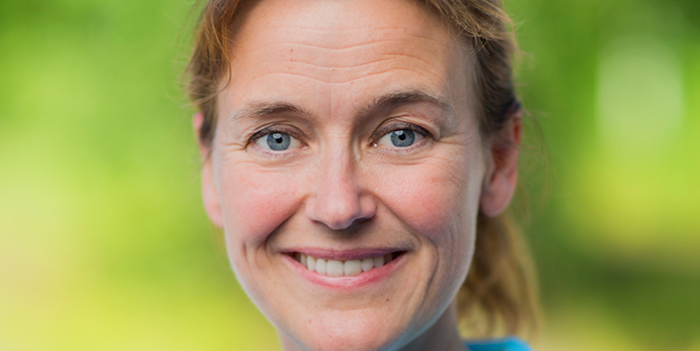Praktikertjänst improves patient care with smart technology

When Praktikertjänst N.Ä.R.A. in Täby chose to start up a new team for advanced medical care in the home, Elisabeth Norén, today’s head of Geriatrics, was one of the initiators. She explains: - The goal was to create the ...
... possibility to provide as good a quality of life as possible for the chronically ill, who are often older patients, through advanced medical care in the home. What sets medical care
in the home apart is that the medical personnel are to a greater extent more
mobile than in other healthcare sectors. What is often lacking are good tools for
collecting information about the patient, and for handling documentation whilst
on the go.
Before visiting a patient, medicine lists, lab results and notes from previous consultations are printed out. What is said during a consultation with a patient is often handwritten and is later transcribed to a medical record when the doctor or nurse returns to the hospital. According to Elisabeth the challenge is twofold. The risk is that when a medical record is transcribed from notes or from memory at a later point, it won’t have all the relevant information. Furthermore this way of working creates more work, and is more time consuming than saving the information directly whilst engaging with the patient.
Goal to work efficiently instead of faster
– If we are to make more time for our patients and provide better care, we simply must work in a better way. When we formed the advanced medical care in the home team, it was clear that we needed to review our tools and processes for documentation and information handling, says Elisabeth Norén.
Today some the changes are being driven by the STELPA project, a project which uses smart technology to improve our work with patients, where the goal is to take advantage of, and develop the possibilities of IT and new technology to enhance healthcare.
– Swedish healthcare, which in many respects lies in the forefront, is relatively behind when it comes to eHealth and IT. Many other branches have come much further in this area. Therefore, we had an unspoken ambition from the start that the new team should be more on the leading edge technically, and have the possibility to try new technology, explains Elisabeth.
An important piece of the puzzle was when one of the team’s nurses met Fredrik Wångberg, CEO of the IT company Strikersoft, by chance. The two of them hit it off because of their shared interest in developing healthcare, and in working in a smarter way with the help of IT. Together they created the idea on which the current solution is being built.
SwipeCare contributes to standardized working routines
The co-operation with Strikersoft has led to the fact that STELPA and Praktikertjänst N.Ä.R.A are today pilot projects for the new IT platform SwipeCare, with a goal to standardize and simplify working routines with the help of guides, templates and checklists.
The first application supports nurses in the advanced medical care in the home team, by simplifying the weekly patient follow-up. With the help of an iPad and a readymade checklist with predefined choices, the nurse, preferably together with the patient, assesses the patient’s health. After the visit the answers to the questionnaire are saved as text, which can simply be added to the patient’s medical record.
– SwipeCare is a good example of how one can use technology to increase efficiency and improve healthcare quality. The service helps to create a more structured meeting with the patient. It is easier to get through all the questions and leaves time over for other things, at the same time variations in assessments are reduced, Elisabeth Norén notes.
A joint solution for multi-professional teams
Praktikertjänst N.Ä.R.A. AB has a total of 10 different advanced medical care in the home teams. On top of that there are geriatric wards in different hospitals and the long term goal is that all wards get access to the new tools. In order to realize this goal the possibility of integrating the solution with existing medical recording systems needs to be improved.
– Today the data that is collected with the help of SwipeCare, must be manually transferred to the medical record system. For the project to reach its full potential, the data transfer must be automatic. That in turn puts requirements on the providers of medical record systems.
But the ambition doesn’t stop there. Elisabeth Norén and the STELPA project are stretching the limits. Today they are already working with multi-professional teams which include doctors, nurses, physiotherapists, counsellors and dieticians who co-operate to give the patient the best possible care. Now the aim is to develop a joint SwipeCare service for all professional roles in the team.
– Having highly specialized professional roles means that each individual writes his or her own medical record and personally signs it off. Today, the patient first meets the doctor who writes the admission notes. Then the nurse takes his or her notes, followed by the physiotherapist and so on. The patient often has to answer the same question several times, and the patient information is duplicated in the system. With shared templates and common medical records we should be able to avoid both problems, and streamline and improve healthcare even more. That is our next ambition, concludes a committed Elisabeth Norén.
Elisabeth Norén gave a presentation about STELPA at Vitalis, Gothenburg, on 6 April at 9.00 "Mer tid till vård när vi swipar med patienten".
To see the presentation (in Swedish) click HERE






